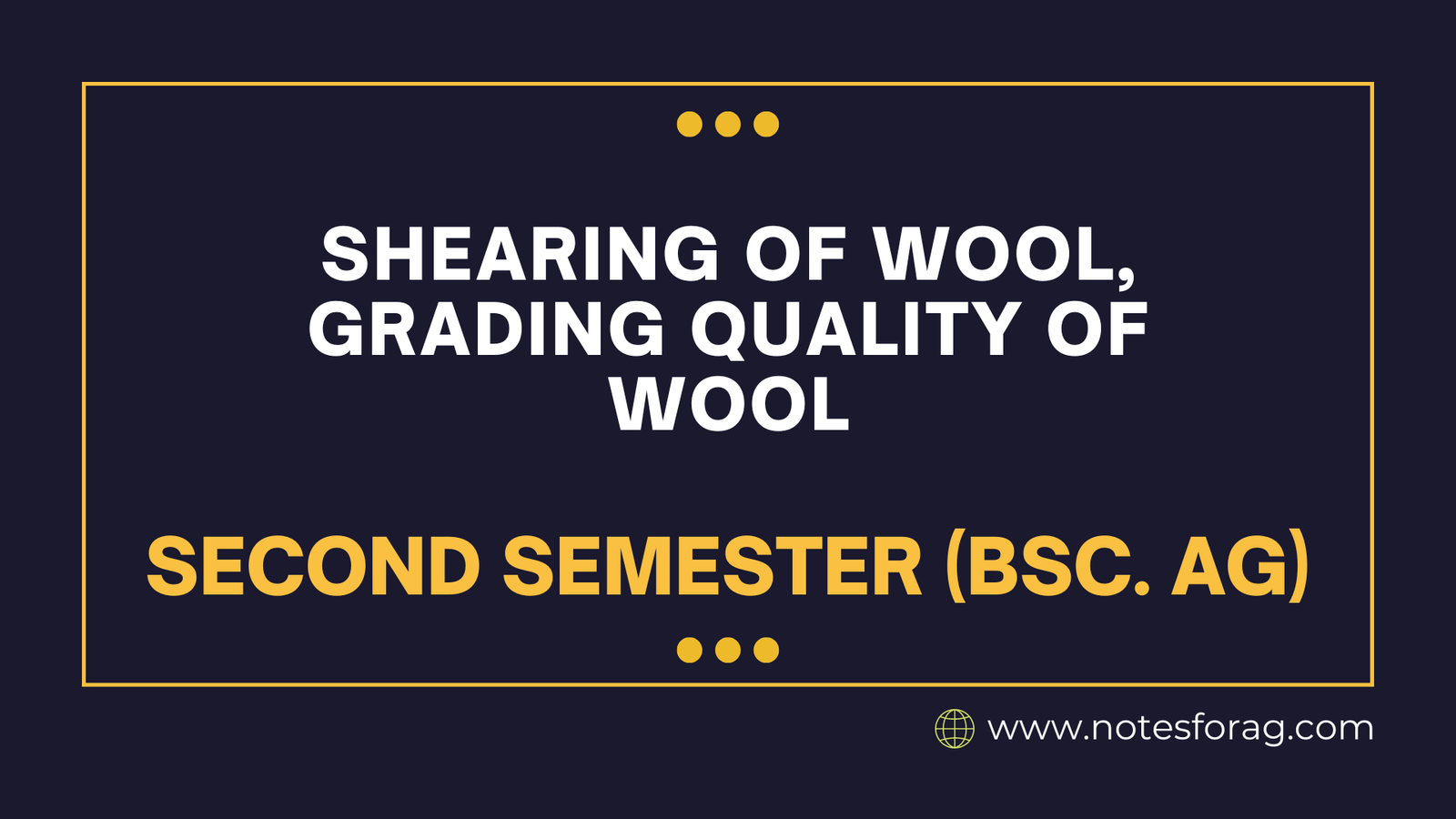Shearing wool is the annual removal of fleece from sheep and other wool-bearing animals to ensure their health and comfort while also providing raw material for the textile industry. Wool quality is graded based on qualities such as fineness, staple length, crimp, strength, color, and cleanliness, which divide the wool into categories based on its intended purpose. Both methods are required to maintain high standards in wool production, which ultimately affects the quality and value of wool goods.
Table of Contents
Shearing of Wool
Shearing is a vital stage in wool production, converting a sheep’s fleece into a desirable fiber for market usage. Timing is critical, with spring being the most ideal season because it coincides with the sheep’s natural shedding cycle, resulting in best fleece quality. Autumn is also a possible alternative, especially in milder climates.

Professional shearers use specific tools and procedures to complete this process quickly and compassionately. The principal tool is a mechanical handpiece with combs and cutters for trimming the fleece near to the skin without causing injury. Hand shears, while less popular, are still utilized in some traditional rituals. The shearing shed is a designated place where sheep are brought in to ensure a regulated atmosphere throughout the procedure.
The process starts with herding the sheep into the shed, where they are caged and separated. The sheep are then properly positioned to reduce stress and movement. A good shearer can remove the fleece in a single, continuous piece, a process known as “one-piece shearing.” This approach not only retains fleece quality, but it also increases process efficiency.
Importance of Shearing
- Animal Health: Shearing avoids overheating and lowers the likelihood of parasitic infestations, skin disorders, and infections.
- Animal comfort: Removing heavy fleece enhances movement and general comfort, particularly during the warmer months.
- Wool Quality: Annual shearing ensures that the wool remains clean, impurity-free, and of high quality.
- Economic benefits: Regular shearing benefits the wool business by ensuring a consistent supply of high-quality wool, which contributes to farmer income.
- Preventing Wool Rot: Excessive wool can hold moisture, causing wool rot and other problems that can injure the animal and lower wool quality.
- Environmental management: Helps to keep sheep’s living spaces clean by preventing the accumulation of dung and other waste that might become trapped in long wool.
Shearing Process
- Preparation: Animals are often kept dry and clean before shearing to produce high-quality wool.
- Equipment: Shears, both electric and hand-held, are regularly utilized. Proper equipment maintenance is essential for avoiding injuries and achieving a clean cut.
- Technique: Skilled shearers utilize particular procedures to remove the wool in one piece, reducing stress on the animal and preventing cuts.
- Post-Shearing Care: Animals are evaluated for injuries and treated if necessary. Sheared wool is then collected and processed.
Grading Quality of Wool
Wool grading is a thorough process that determines wool’s quality and appropriateness for various end uses. Professional wool graders use a variety of criteria to evaluate and classify wool, ensuring that it fulfills industry standards and consumer expectations. Fiber diameter, which is generally measured in microns, is one of the most important characteristics evaluated when grading wool. The finer the wool, the lower the micron count, with superfine wool being particularly desirable for luxury clothes due to its softness.
Staple length, or the length of individual wool fibers, is another important consideration. Longer fibers are often preferred since they may be spun into finer, more durable yarns. Crimp, or the inherent waviness of wool fibers, is also examined. Wool with a good crimp is elastic and has excellent insulation capabilities, making it perfect for textiles that need both warmth and flexibility.
Color and overall cleanliness are additional factors for wool grading. Wool that is free of contaminants and has a constant color is preferred. Contaminants like vegetable matter and synthetic fibers can degrade the quality and processing efficiency of the wool. As a result, wool graders thoroughly inspect and eliminate any foreign objects to ensure a clean product.
Factors in Grading Wool
- Fineness: Wool with fewer microns is softer and more valued. Merino wool, for example, is recognized for its fineness.
- Staple length: The length of each wool filament. Longer fibers are often preferred since they are easier to spin and yield stronger yarn.
- Crimp: The natural waviness of wool fibers. Wool with a higher crimp has more elastic properties and provides better insulation.
- Strength: The tensile strength of wool fibers determines their longevity and appropriateness for various textile products.
- Color: Uniform color is preferable, with white wool being the most dyeable. Discolored wool may be degraded.
- Cleanliness: Wool devoid of impurities like vegetable matter, grime, and grease commands a premium price. Clean wool needs less processing.
Grading Process
- Sorting: Wool is graded using the variables listed above, either by hand or by machine.
- Testing: Specialized laboratories can assess samples for fineness and strength.
- Classification: Wool is then graded or divided into numerous categories, each suitable to a certain final product, ranging from fine clothing to coarse carpets.
Shearing wool from sheep and other wool-bearing animals is essential for their health, comfort, and protection against overheating and parasitic infestations. It supplies high-quality wool to the textile industry. Grading this wool entails determining fineness, staple length, crimp, strength, color, and cleanliness in order to categorize it for diverse uses while ensuring the wool’s quality and maximising its economic value. Shearing and grading are both necessary activities that help to the welfare of the animals and the development of high-quality wool products.
Frequently Asked Question(FAQ)
Why is shearing necessary for sheep?
Shearing is necessary to keep sheep comfortable and healthy, avoid overheating, and lower their risk of parasite infestations.
What factors determine the quality of wool?
The fineness, staple length, crimp, strength, color, and cleanliness of wool influence its quality.
Related Articles

